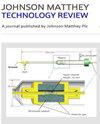Potential of Hydrogen Internal Combustion Engine for the Decarbonized Passenger Vehicle
IF 2
4区 化学
Q4 CHEMISTRY, PHYSICAL
引用次数: 0
Abstract
CO2 regulations are becoming very stringent due to the goal of reducing greenhouse gases and achieving carbon neutrality. It has already become a common situation that electric vehicles are emerging as eco-friendly power systems rather than vehicles equipped with conventional internal combustion engines, and their share in the market is increasing. However, even with an internal combustion engine, CO2 can be drastically reduced if a carbon-free fuel such as hydrogen is used. Raw NOx emissions can be overcome to a certain level through ultra-lean burn operation, but in order to balance the amount of hydrogen and air in the limited space of combustion chamber, a drop in the engine's maximum output should be accepted. Hyundai Motor Company also previously developed an engine using hydrogen fuel, but was unable to progress to mass production. Since then, hybrid technology has become popular, and with the development of hydrogen injection devices, an era has arrived where the possibility of mass production can be increased. and for this reason, various studies on internal combustion engines using hydrogen fuel based on existing SI engines or CI engines are rapidly increasing recently. In this study, a hydrogen fuel engine was designed and manufactured based on the mass produced gasoline spark ignition engine. CO2 level was confirmed from initial performance evaluation, and it is found that raw NOx levels and maximum power were in a trade-off relationship with each other under same air-charging system application. In addition, the method to improve maximum engine torque was verified while maintaining the raw NOx level, and the maximum engine power improvement level was confirmed when raw NOx emissions were allowed to increase. Thereby it was shown that the potential of the carbon-neutral internal combustion engine.氢内燃机在脱碳乘用车中的潜力
由于减少温室气体和实现碳中和的目标,二氧化碳法规变得非常严格。电动汽车已经成为代替传统内燃机汽车的环保动力系统,其市场占有率正在增加。然而,即使使用内燃机,如果使用氢等无碳燃料,二氧化碳也可以大幅减少。通过超稀薄燃烧操作,可以将NOx的原始排放克服到一定程度,但为了平衡燃烧室有限空间内氢气和空气的数量,应该接受发动机最大输出的下降。现代汽车也曾开发过氢燃料发动机,但未能大规模生产。从那时起,混合动力技术开始流行,随着氢注入装置的发展,大规模生产可能性增加的时代已经到来。因此,最近在现有SI发动机或CI发动机的基础上,对氢燃料内燃机的各种研究正在迅速增加。在量产汽油火花点火发动机的基础上,设计制造了氢燃料发动机。从初始性能评估中确定了CO2水平,发现在相同的充气系统应用下,原始NOx水平和最大功率之间存在权衡关系。此外,验证了在保持NOx原始排放水平的情况下提高发动机最大扭矩的方法,以及在允许NOx原始排放增加的情况下,确定了发动机最大功率提高水平。由此可见,碳中性内燃机的潜力。
本文章由计算机程序翻译,如有差异,请以英文原文为准。
求助全文
约1分钟内获得全文
求助全文
来源期刊

Johnson Matthey Technology Review
CHEMISTRY, PHYSICAL-
CiteScore
4.30
自引率
4.30%
发文量
48
审稿时长
12 weeks
期刊介绍:
Johnson Matthey Technology Review publishes articles, reviews and short reports on science enabling cleaner air, good health and efficient use of natural resources. Areas of application and fundamental science will be considered in the fields of:Advanced materials[...]Catalysis[...][...]Characterisation[...]Electrochemistry[...]Emissions control[...]Fine and speciality chemicals[...]Historical[...]Industrial processes[...]Materials and metallurgy[...]Modelling[...]PGM and specialist metallurgy[...]Pharmaceutical and medical science[...]Surface chemistry and coatings[...]Sustainable technologies.
 求助内容:
求助内容: 应助结果提醒方式:
应助结果提醒方式:


